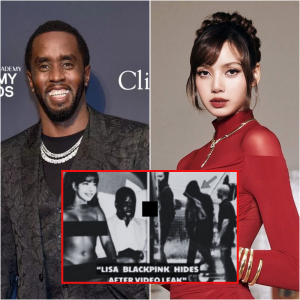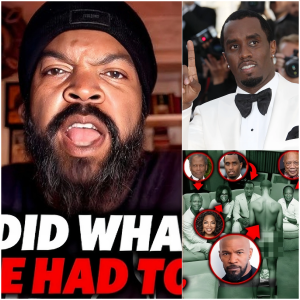In the dynamic world of hip-hop, where personal and professional lives often intertwine, recent events have sparked significant discussions. Rapper and entrepreneur 50 Cent made headlines with a provocative comment directed at fellow artist Busta Rhymes, stating, “Busta Rhymes let his daughter get DIDDIED that day.” This remark has ignited debates about the implications of such statements and the responsibilities of public figures in the music industry.
Understanding the Contex

To grasp the weight of 50 Cent’s comment, it’s essential to delve into the relationships and histories of the individuals involved. Busta Rhymes and Sean “Diddy” Combs have shared a longstanding professional rapport, collaborating on various projects over the years. Their association has been marked by mutual respect and camaraderie within the industry.
The term “DIDDIED,” as used by 50 Cent, appears to be a colloquialism derived from Diddy’s name, potentially implying influence or involvement in a particular situation. However, without explicit clarification from 50 Cent, interpretations remain speculative.
The Incident in Question

The catalyst for 50 Cent’s remark seems to be a resurfaced video featuring Diddy and a young girl named Ava. In a 2020 Instagram Live session, Diddy jokingly referred to Ava as his “adopted daughter,” despite no legal adoption taking place. This video has recently gained attention, especially in light of Diddy’s legal challenges, including serious allegations that have led to his arrest. Concerns have been raised about Ava’s well-being, prompting discussions about the responsibilities of adults in safeguarding minors in their care.
50 Cent’s Provocative Commentary
Known for his candid and often controversial social media presence, 50 Cent’s comment about Busta Rhymes has added fuel to the ongoing discourse. By stating, “Busta Rhymes let his daughter get DIDDIED that day,” 50 Cent insinuates a lapse in judgment or oversight on Busta Rhymes’ part concerning his daughter’s interaction with Diddy. This assertion has led to widespread speculation and debate among fans and industry observers.
Busta Rhymes’ Response
In response to the swirling rumors and 50 Cent’s pointed comment, Busta Rhymes has addressed the situation publicly. During an interview at the premiere of “Venom: The Last Dance,” he urged the public to exercise patience and avoid hasty judgments. Busta emphasized the importance of understanding the full context before forming opinions, highlighting the potential harm of spreading misinformation. He stated, “Everyone needs to chill out,” reflecting his frustration with the rapid proliferation of unverified narratives.

Implications for the Hip-Hop Community
This incident underscores the complex interplay between personal relationships and public perception within the hip-hop community. It raises critical questions about the responsibilities of artists as public figures, especially concerning their influence on younger generations. The situation also highlights the potential consequences of making public allegations without comprehensive evidence, as such actions can have far-reaching impacts on the individuals involved and the broader community.
The Role of Social Media in Shaping Narratives
The rapid dissemination of 50 Cent’s comment exemplifies the power of social media in shaping public discourse. Platforms like Instagram and Twitter enable artists to share their unfiltered thoughts directly with the public, but this immediacy can also lead to the spread of unverified information. The incident serves as a reminder of the need for responsible communication, where public figures consider the potential ramifications of their words before sharing them with a global audience.
Conclusion
The exchange between 50 Cent and Busta Rhymes offers a glimpse into the intricate dynamics of the hip-hop industry, where personal relationships, public perception, and media narratives intersect. As the situation continues to evolve, it serves as a poignant reminder of the importance of thoughtful discourse, the verification of information, and the responsibilities that come with public influence. In an era where information spreads rapidly, the onus is on both public figures and consumers to engage critically and compassionately with the content they encounter.





